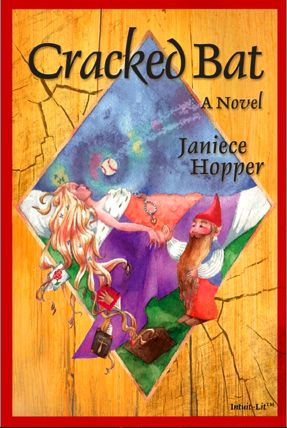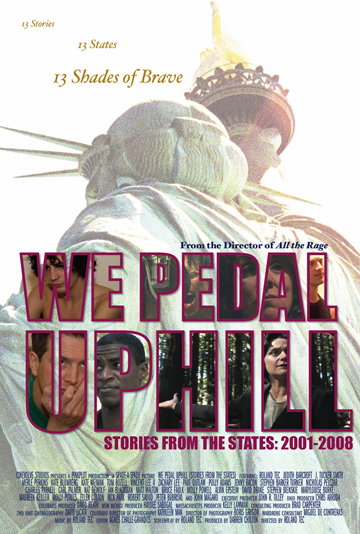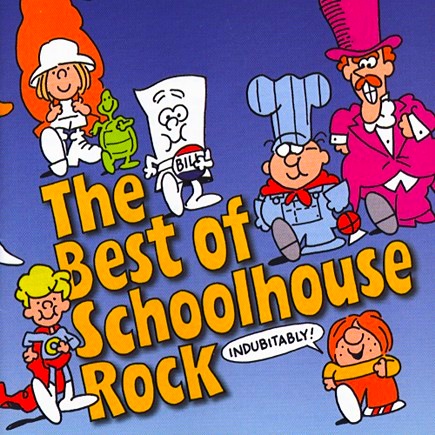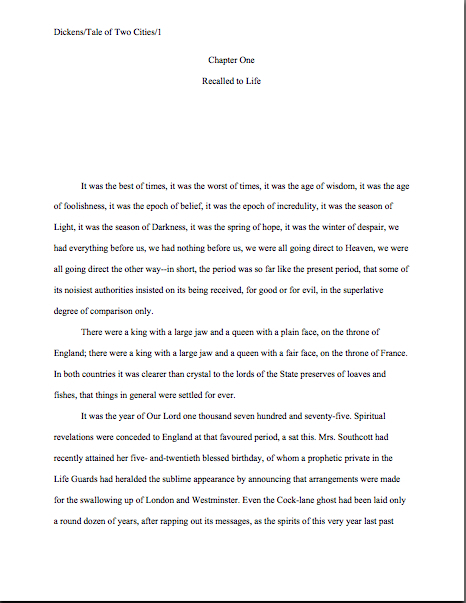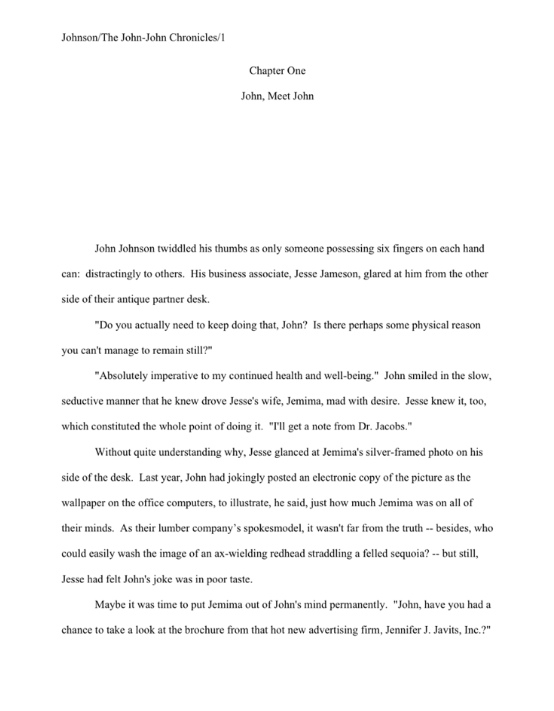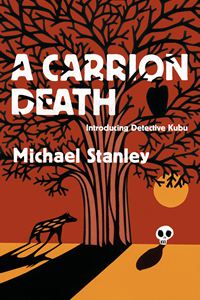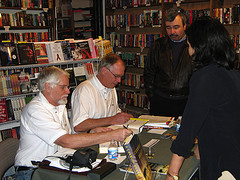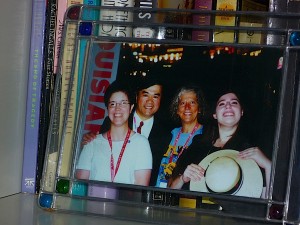
I’m not much given to double-takes, but I must admit, I did a lulu when I spotted this sign standing by the side of a two-lane highway in unincorporated Neskowin, Oregon. To the casual observer, Neskowin is a blink-and-you-miss-it collection of buildings, but to the observant tourist, it is fraught with enigma: its population is 170, according to its ostensibly unofficially municipal website — a human density which renders the two golf courses located there, well, surprising. Who is playing golf in such high numbers that a lone course wasn’t deemed sufficient for local needs? Bears? Sea lions? Migratory Scots with an affection for Pacific Rim cuisine?
All of these legitimate wonders pale, however, next to the enigma of the Sanitary Author.
What makes him or her so darned clean, the passing motorist is left pondering, and why is the population of Neskowin so proud of that particular resident’s hygiene habits that the non-city fathers saw fit to erect a sign to commemorate the SA’s immaculate practices? Did s/he win some sort of international award for cleanliness akin to the Nobel prize?
Does the SA reside in remote forest because such cleanly writing practices would not have been feasible within the confines of a large city like New York, Los Angeles, or even charming and nearby Portland? More importantly from the point of view of fellow authors, how does being so sanitary affect the quality of the SA’s writing — and if it has a net positive effect, should we all be beating a path to Oregon, demanding to follow in the SA’s spotless footsteps?
And should we be worried about all of the unsanitary authors running around out there?
Oh, I know what prosaic types out there are likely to tell me: since the period after AUTHOR would tend to indicate an abbreviation, this sign probably only refers to the local sanitary authority, the fine municipal employees who look after water quality and maintaining the local sewer system. So much for impenetrable ambiguity, the literal would doubtless conclude. Just ignore that sasquatch strolling by; there’s nothing to see here.
But look closely at that sign: there’s a period after SANITARY, too. Complete words are seldom abbreviations, I find.
So the mystery continues. On to the business of the day.
(Stop thinking about the great unwashed mass of unsanitary authors currently roaming the face of the earth. No good could come of pondering their filthy ways.)
Hey, remember how I was saying just the other week that quite a number of my ideas for blog posts have resulted from readers’ good questions? Or rather from my inability to answer them briefly enough to prevent the fact that the comments section of this blog is not searchable (from your side, anyway) from annoying the heck out of me?
Case in point: earlier this month, busily submitting reader Rachel asked a question about stamps on the required self-addressed stamped envelope (SASE). Now, I’ve written on this topic quite a bit over the years — so much so that there’s an entire SASE GUIDELINES category on the archive list at the lower right-hand side of this page — so my first instinct was to send her there, or to advise her to do a site search under stamp, and continue on my merry way, confident that yet another writerly problem had been successfully solved.
Then I did a site search under stamp.
Suffice it to say that quite a few posts came up — more, I suspect, than any writer in the first throes of excitement about receiving a request to send materials to an agent would be likely to scan for an answer to this specific question. Also, the absolutely dead-on-target explanation I had in mind turned out to be located in the comments of a post from a couple of years ago…and thus not searchable from a reader’s perspective.
Not precisely user-friendly, in other words.
So while my second instinct was to mutter, “Yes, but all of the basics a submitter would absolutely need to know could be found under the aptly-named HOW TO PUT TOGETHER A SUBMISSION PACKET” (which is in fact true, I realized that this wasn’t the world’s most satisfactory answer. Part of my goal in setting up the category list is to render it as easy as possible for my readers to find precisely the information they are seeking. (Another part, admittedly, is so I can say, “Look, I’ve already written about that — there’s a category on the list at right that addresses your concerns precisely,” and proceed on my aforementioned merry way.)
My solution was — and is — threefold. ( Well, fourfold, if you could my having answered Rachel’s question on the spot.) First, I’ve created a new MAILING REQUESTED MATERIALS category on the list at right, so the next time a question like this comes up, I can smugly point the question-asker there. (Hey, I’ve got to make up for lost time on the merry way.)
Second, I’m going to address Rachel’s (quite good) question right now as its own post, rather than merely in the comments, so anybody else who happens to wonder about it in the months and years to come will have an easier time tracking down the answer. It just goes to show you: asking thoughtful questions not only helps the individual who brings them up, but the entire Author! Author! community.
And third, I’m NOT going to waste any brain space wondering if the Sanitary Author used to refuse to lick his own stamps. Or envelopes. (But how did s/he survive before self-adhesion became the norm?)
Let’s take a gander at what Rachel wanted to know:
I have a question about the SASE that you put in with your materials. I understand it was always better to use stamps so that the agent can just toss it in the outgoing mail bin at the agency. But I was talking to the postal clerks yesterday and they said that post-911 rules are now in effect: any stamped package over 13 ounces has to be brought to the post. I asked to get metered mail instead, and they said it wouldn’t work because it would have that date (yesterday) on it. A dilemma!
I explained my situation to them and the clerks suggested just using a priority stamp, because if a SASE were expected, then stamps are really the only way to go.
Is that how they’re doing it now?
Rachel asks excellent questions, as you may see. Before I launch into lengthy explanation, however, let’s define our terms.
As those of you who successfully made it through either my just-finished HOW DO MANUSCRIPTS GET PUBLISHED? series (posts conveniently gathered under the category of the same name on the archive list on the lower right-hand side of this page, for the reading pleasure of those of you who missed it) or any of my previous series on the ins and outs of submission (HOW TO PUT TOGETHER A SUBMISSION PACKET, for instance) are already aware, all queries and requested materials sent to US-based agents via mail should be accompanied by a SASE.
No exceptions, I’m afraid. Forgetting to include a SASE is an instant-rejection offense at most agencies, and with good reason: if the agent decides to pick up the manuscript, the writer’s having included the expected SASE demonstrates a pleasing ability to follow directions, and if the agent decides to pass, s/he may return rejected pages at the writer’s expense.
Yes, I know: it’s annoying to be underwriting one’s own rejection, but there actually are some benefits for the writer in this arrangement. To name but one: finding out that your submission has in fact been rejected, rather than gnawing your fingernails in perpetual worry for a year or two. (For some other benefits, as well as a brief exposition of the logic behind the SASE, please see my earlier post on how writers have historically ended up footing the bill for two-way postage.)
Contrary to popular opinion, a SASE shouldn’t always take the form of a business-size envelope; it varies according to what was sent in the first place. Because the point of the SASE is to ensure the safe return of whatever a writer sends to an agency, you should always include enough postage (in the form of stamps, not metered) on your SASE that everything you submitted may be popped into it and mailed.
What might that look like in practice, you ask? Well, when sending a query, including a SASE is pretty straightforward: the writer takes a second envelope, writes his own address on it, adds appropriate postage, folds it, and stuffs it — neatly, please, as becomes a Sanitary Author — into the query envelope.
With requested materials, the process is similar, but the packaging is different. If the agent only asks to see 50 pages or a chapter or two, few enough that they could be comfortably placed in a Manila envelope without wrinkling them (the Sanitary Author deplores crumpled pages; so do many agents), all you need to do is take a second Manila envelope, self-address it, affix the same amount of postage you’re going to use to send the whole packet to the agency, fold it, and place it neatly within the submission envelope.
SASE-wrangling becomes a bit trickier if you’ve been asked to send the entire manuscript, because that generally entails using a box. (For a detailed explanation of what types of box should and shouldn’t be used, complete with glamorous photographs of cardboard in its various manifestations, please see this post on the subject.) Obviously, it’s going to be unwieldy to stuff a second box inside the first, so it’s completely acceptable just to include a self-addressed mailing label and postage. (Be sure to mention both in your cover letter, so they won’t get lost on the agency end — and if you’re not sure why you need to include a cover letter at all, please see the COVER LETTERS FOR SUBMISSIONS category at right before you submit.)
Equally obviously (but I’m going to mention it anyway, just in case), the stamps on the SASE need to be US stamps, if the agency is US-based. That requirement means that SASEing is invariably a great deal more challenging — and expensive — for writers in foreign climes querying or submitting to US agencies; the far-flung are not exempt from the SASE expectation, I’m afraid, which can make e-mailed querying a more attractive option.
The good news is that the US Postal Service’s website sells stamps at face value, rather than at the exorbitant mark-up one frequently finds for them abroad . The USPS more than happy to ship ‘em to your doorstep in exotic climes so you may stick ‘em onto your SASE before popping your submission into the mail.
Is everyone clear on the care and feeding of the SASE? Good.
Okay, now that we’re all on the same page, so to speak, let’s get back to the crux of Rachel’s question: has the post-9/11 alteration in post office policy altered what agencies expect to see on a SASE?
The last few years have indeed seen some changes in how agencies handle packages, but actually, most of them date from before 9/11, back to the anthrax scare. Before that, virtually no agency accepted electronic submissions, for instance; they may not pay their Millicents much, but the average agency certainly didn’t want theirs to get sick from opening a poisoned query envelope.
E-mailed queries and submissions don’t carry the risk of that sort of infection (and I think we can all guess how the Sanitary Author would feel about that). They do, however, occasionally contain computer viruses, so few agents will open an attachment unless they have already specifically requested an electronic submission from a writer.
Rachel’s clerk was quite right about heavier packages having to be physically carried into the post office by human being, rather than blithely dropped into a mailbox or dumped in a mailroom — a policy shift that would affect virtually any submitted full manuscript. However, that most emphatically does not mean is that the agent is going to be taking a rejected manuscript to the post office herself. Some luckless agency intern will be toting a whole mess of them there every few days.
Or not; since the USPS changed its regulations in this respect, many agencies have side-stepped the return mail problem by just ceasing to return submitted manuscripts to their writers at all. (Problematic on many levels, including the copyright one; I’ve written about this fairly extensively under the SASE GUIDELINES category.) Interestingly, agencies that operate this way usually still expect submitters to include SASEs.
The moral: unless you are querying or submitting electronically OR an agency specifically says it doesn’t use SASEs, you should always include one.
And always use actually stamps on it, rather than metered postage. Despite the changes I mentioned above, the imperative to use stamps on a SASE has never wavered: the goal here is not convenience in mailing, but the submitter’s paying for the manuscript’s return. Regardless of whether that means tossing it into the nearest mailbox (which would still be possible for most partial manuscripts) or assigning Millicent to do it, stamps have always served the purpose best.
That being said, I must confess that I don’t quite understand the clerk’s recommendation to Rachel to affix Priority Mail postage to the SASE, unless he was either trying to get her to use a Priority Mail envelope as a SASE (not a bad idea, especially if the submission is just a few chapters; they fold nicely into a submission envelope) or simply trying to hawk a more expensive stamp. The distinction between Priority Mail and regular mail is the speed with which it arrives; the ease of mailing is identical.
Which means that buying a more expensive stamp or a cheaper one to affix to the SASE is entirely up to the writer. Like overnighting requested materials vs. sending them regular mail, whether a submitter elects to pay a shipper extra money to convey a manuscript from point A to point B is generally a matter of complete indifference to the agent receiving it, as long as it gets there in one piece.
(“And looking pretty,” adds the Sanitary Author. “None of those pesky wrinkles. And print your manuscript on nice paper while you’re at it.”)
To be blunt about it, the agent has absolutely no reason to care how quickly a rejected manuscript reaches its submitter. All she’s going to care about is whether you’ve included the means to mail it back to you at your expense, not hers.
And that, my friends, is the information that most agencies’ listings in the standard agency guides and websites compress into the terse advice Include SASE. Apparently, somewhere on earth, there lurks a tribe of natural-born queriers who realize from infancy precisely what that means, so it requires no further explanation.
I’ll bet the Sanitary Author is one of that happy breed. For the rest of us, learning how agencies work requires a bit of homework — and the asking of good questions.
So thank you, Rachel, for flagging the issue — and everybody, keep up the good work!
 PS: lovers of fluffy bunnies and winsome chicks should make sure to visit Author! Author this weekend, when we will be visited by a guest blogger I’ve been hoping for a long time would join us here. As some of you may have begun to suspect over the past few days, I’m pretty excited about the prospect.
PS: lovers of fluffy bunnies and winsome chicks should make sure to visit Author! Author this weekend, when we will be visited by a guest blogger I’ve been hoping for a long time would join us here. As some of you may have begun to suspect over the past few days, I’m pretty excited about the prospect.







